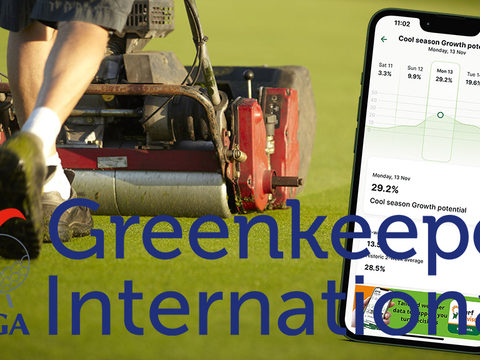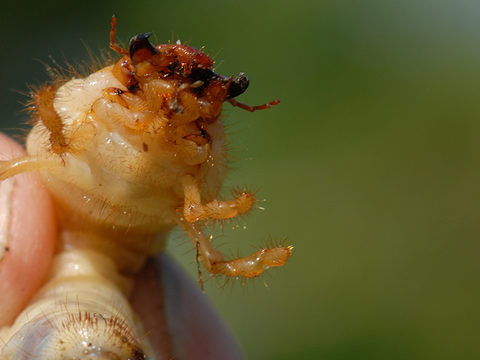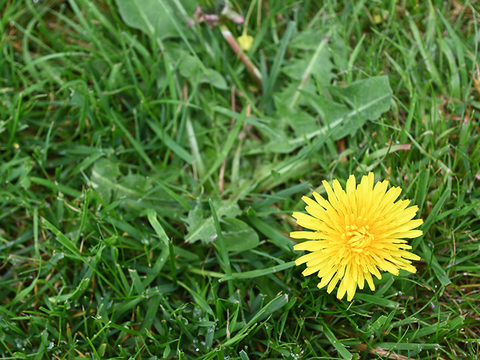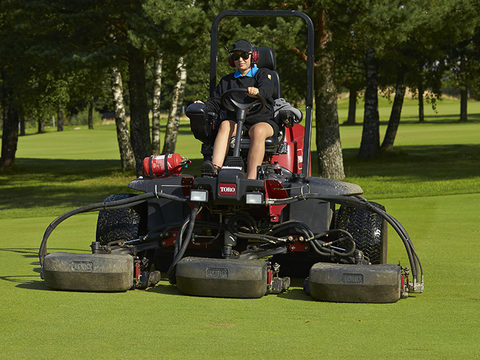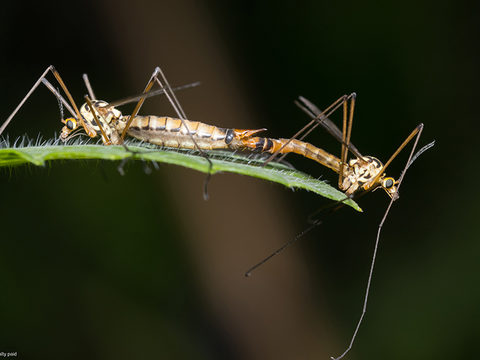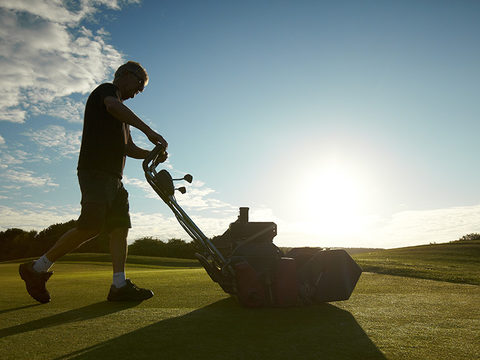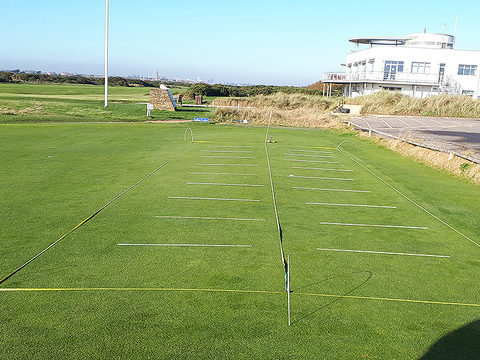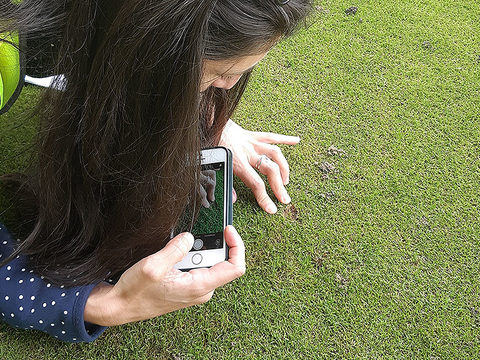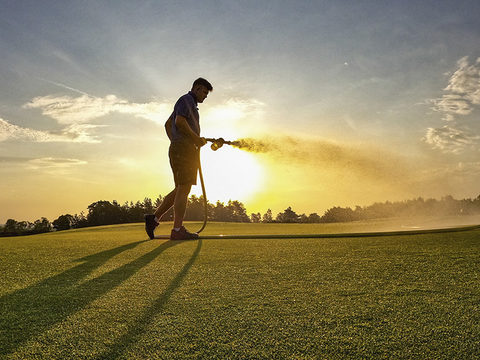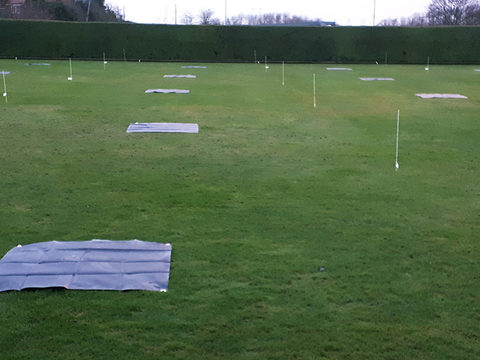Under the spotlight for turf growth
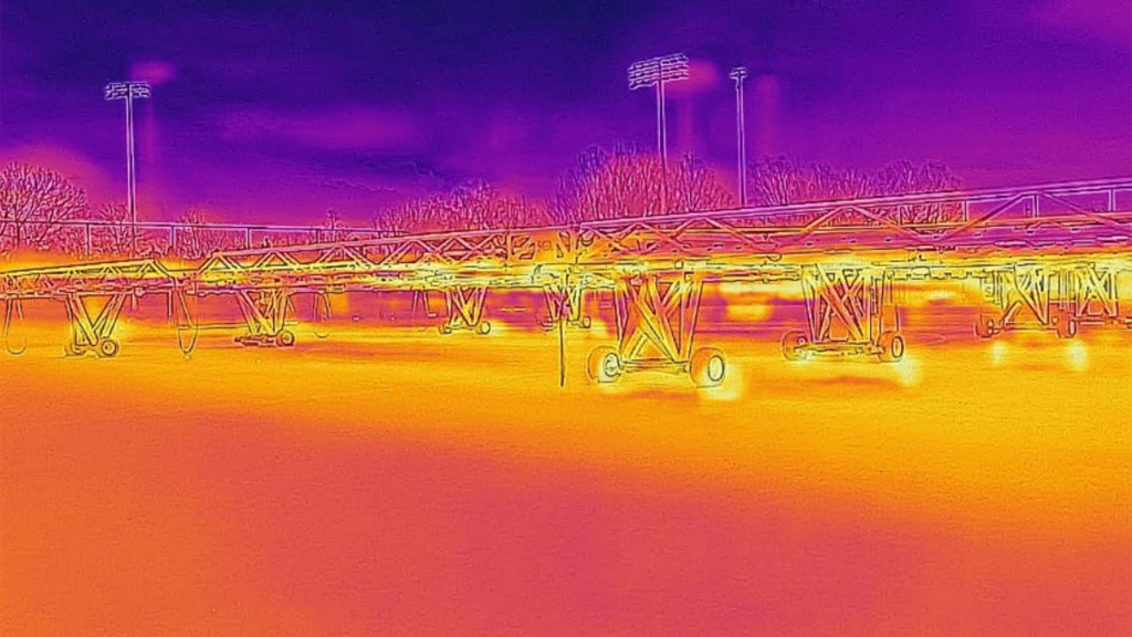
Turf managers are no longer working in the dark ages. Supplementary lighting is often seen as the new dawn for improving turf condition, and the results that have been achieved with season long turf quality enhancements have been impressive.
But, to get the best from any lighting, be that new high-tech light rigs, controlled environment tents or just the age old sun, requires a better understanding of how light works and how plants utilise light, advocates Syngenta Technical Manager, Glenn Kirby.
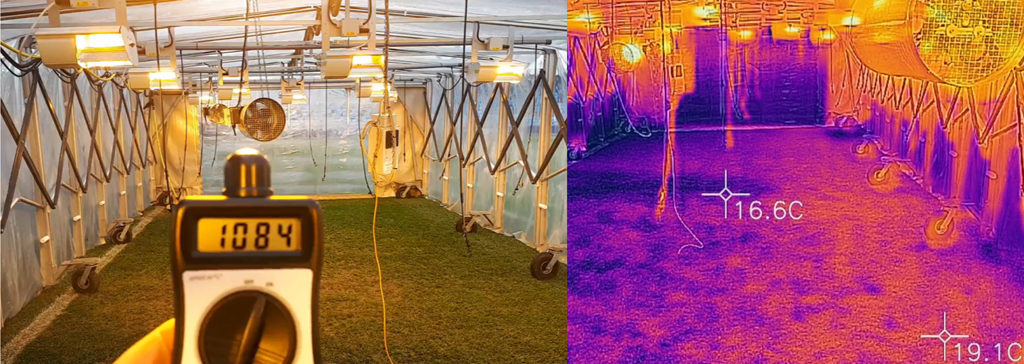
Results of new Syngenta trials with STRI has given an important insight into the effects of shade on sports turf ryegrass. The impact of shade is now being utilised alongside knowledge of the potential of too much light that will damage turf, to calculate the optimum integrated management plan.
Now that we increasingly have the tools to manage light and plant health more effectively, it becomes ever more important to measure and record light to better target inputs. A light meter capable of accurately recording PAR light (Photosynthetically Active Radiation) should be a key tool in any groundsman’s kit bag.
If you don’t know what you’ve got, it’s impossible to know how much extra you need to add, or how you need to manage turf differently.
Studies have shown that once light levels exceed around 600-700 micromoles per m2/sec, then the turf plant’s ability to photosynthesise and convert light energy into carbohydrate plateaus.
In fact, the 600-700 micromole figure applies to healthy turf that is growing optimally. At best, light in excess of 600 micromoles is simply unutilised by the plant, but if there are any other limiting factors or stresses on the plant, such as nutrient or moisture deficiency or compaction, for example, the effect of excess light can be even more damaging.
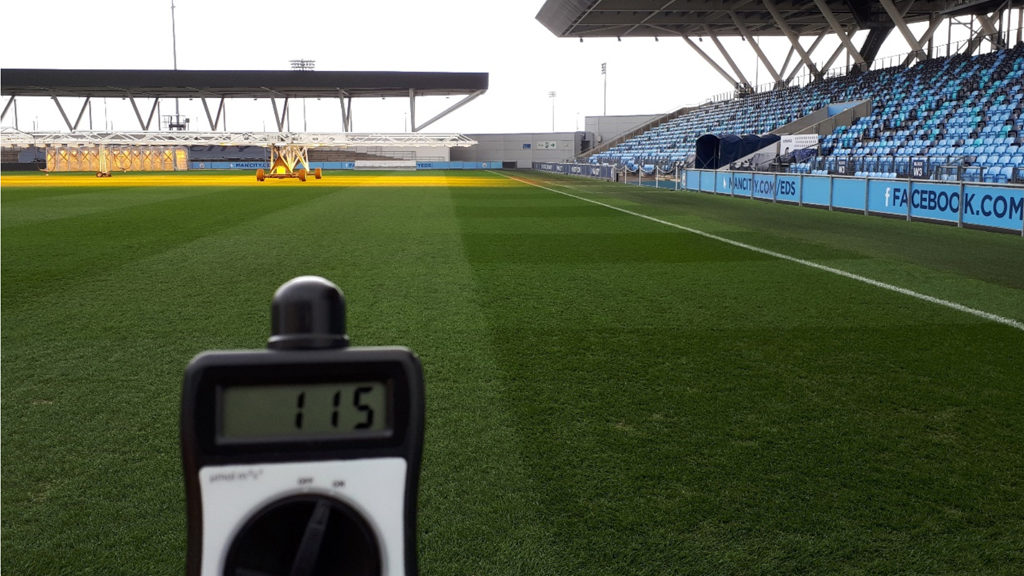
The implication is that light units can be highly beneficial to supplement light levels when they are low, but it could be important not to oversaturate plants with too much light.
Taking light readings in heavy shade from stadiums or trees, for example, has shown intensity can be reduced by as much as 85%. But even dappled shade typically excludes around 40% of light on turf areas.
Measuring light during short season days, from late autumn through to early spring, we can now understand the severe restrictions it creates in trying to manage turf grass in the UK.
However, studies of the daily light fluctuations have shown that, even where the total light measured would indicate sufficient is available, if the plant has been unable to fully utilise the high peaks through the middle of the day, then there could be a serious shortfall of the plant’s requirement (Fig 1).
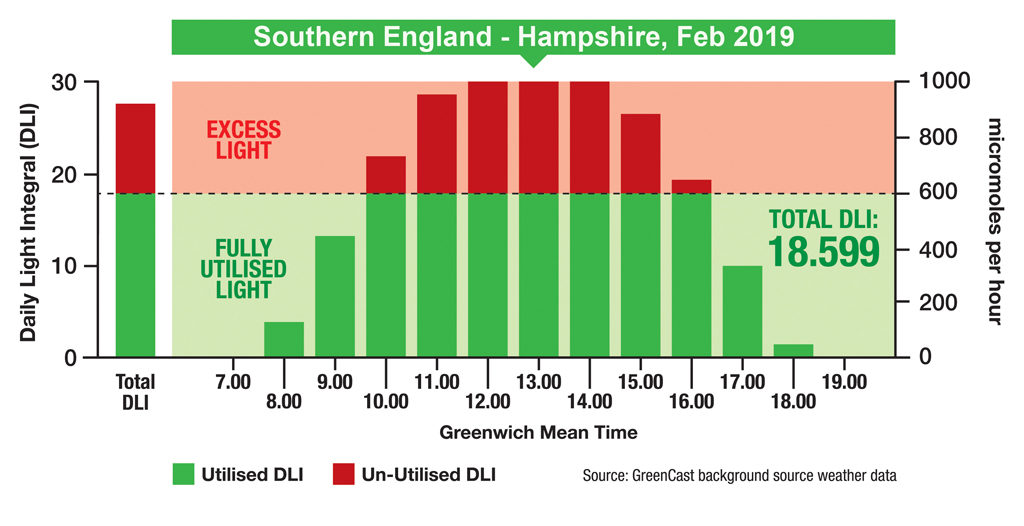
On a bright early spring day turf surfaces in southern England (above), for example, would appear to get good levels of sunlight and approaching the required 23 DLI. However, when periods of unutilised light intensity above 600, in red, are excluded, the actual useable light DLI is far lower, at less than 20. And with a partially shaded area, intercepting perhaps 40% of light, that would fall to around 10 – the very minimum ryegrass requires to grow.
On the same day in Scotland (below), with a DLI of 9, the shortfall in light for any grass growth, is extreme.
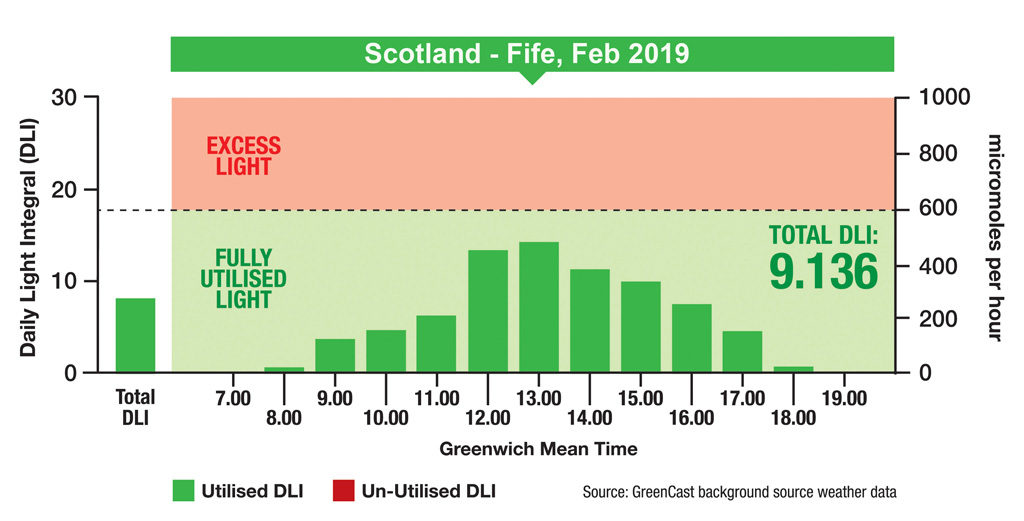
This really highlighted the potential value of lighting to supplement the intensity of sunlight in the periods when it is not reaching 600 micromoles – in this case before 10.00 am and after 4.00 pm.
The requirement for supplementary light when natural light is sufficient would be questionable, however, there could clearly be times, such as heavy cloud cover or areas of prolonged stand shade, where extended lighting may help.
One of the next phases of the research will be to look at the total day length of light at the optimal 600 micromoles can be used by turf plants to maximise plant health and strength; different varieties, or varying management conditions, could optimise at different light levels.
US research, at Arkansas University has indicated, ryegrass requires a Daily Light Integral (DLI) of around 23 to maintain optimum healthy turf quality. The DLI is a measure of the number of photons of PAR light that falls on a surface over a 24 hour period.
In the UK, research has demonstrated that ryegrass will survive at a DLI as low as 10. However, should it come under any stress or be subjected normal pitch wear and tear, the opportunity for recovery could be severely compromised by the low light.
STRI shade trials over the past year has clearly shown that in low light situations, a Primo Maxx II programme helps to produce stronger turf plants that are better able to utilise available light.
The implication is that any areas that are frequently low in light, would be better able to withstand the stress under a treatment programme.
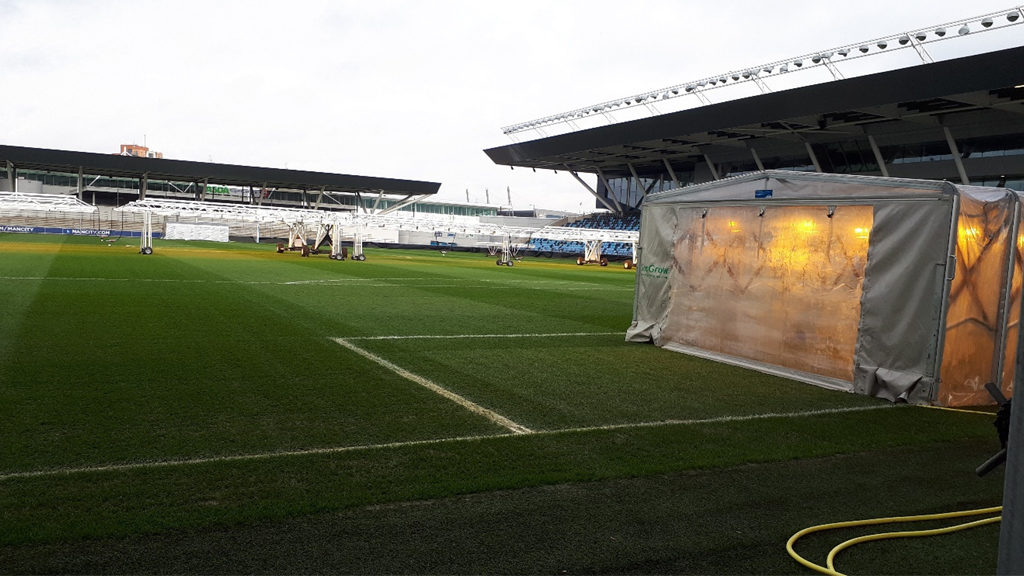
This new STRI work (detailed below) suggests that, under a Primo Maxx II programme, the crucial limiting light requirement for a perennial rye-grass surface may be as low as a DLI of 10 - 15. “When light levels are low day-after-day, which could make a real difference, particularly where supplementary lighting is not available. It is an area of work that requires further investigation, now that we can actually manage turf to better adapt to these situations.
From the results we have already seen, in shaded or low light situations there may be a clear benefit in continuing a Primo Maxx II programme right through the winter, albeit at a lower rate and extended application interval than would be used during better growing conditions.
The physical growth regulatory action of Primo Max II also holds back the vertical extension of leaves in search of light in shady conditions, and encourages stronger lateral density. The chlorophyll concentration is also higher in the shorter leaf growth, which makes photosynthetic activity from the available light more efficient.
Then, as we move into a summer programme with higher light levels that are frequently well in excess of the plant’s requirements, there will be greater need to protect leaves from the excess with a Ryder UV pigment programme – particularly when turf may be under any other stresses that will exacerbate the effects of excess light.
Clearly, light is only one of the interacting factors that impact on turf health and growth, so to get the best from it highlights the importance of minimising stress on the turf - and providing it with all the conditions for optimal growth.
STRI Technology Manager, Dr Tom Young, reported plots of perennial ryegrass were treated with Primo Maxx II at different application intervals for a period of six weeks before a shade cover, initially blocking approximately 40 % light, was applied to the whole area in early September 2018. This was replaced with a thick shade cover in early October, which blocked approximately 80% of the light.
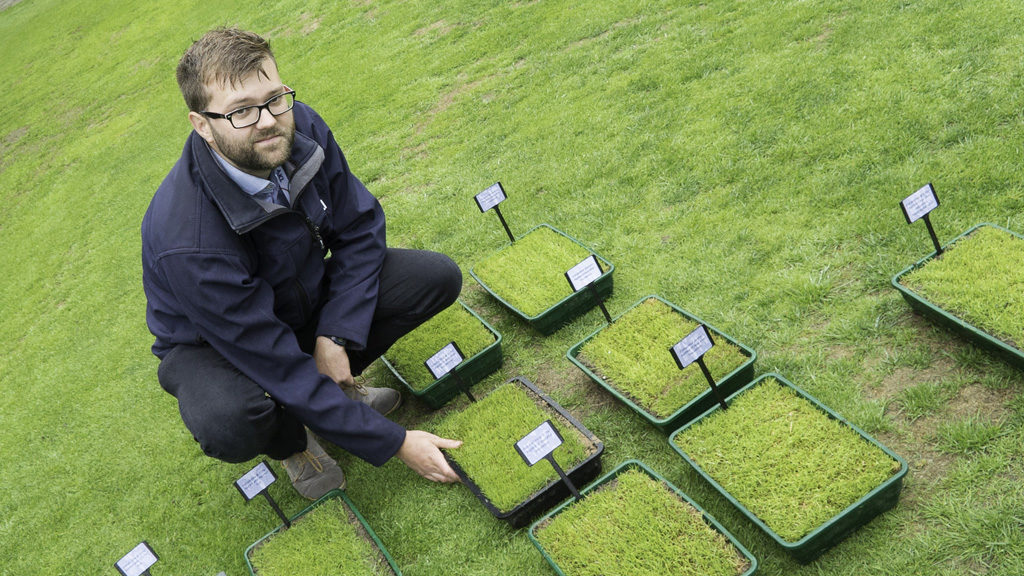
The increase in shade, along with the reduced light intensity and day length in October, resulted in the DLI on the side of the trial without supplementary HPS (High Pressure Sodium) lighting dropping below the 10 mol m-2 day-1 minimum value required for perennial ryegrass.
This strongly correlated with a sudden drop in turf quality and cover in late October and early November on the trial area which did not receive supplementary HPS lighting. After a two to three week lag, for the impact of low light to take effect, the drop off in turf health was drastic.
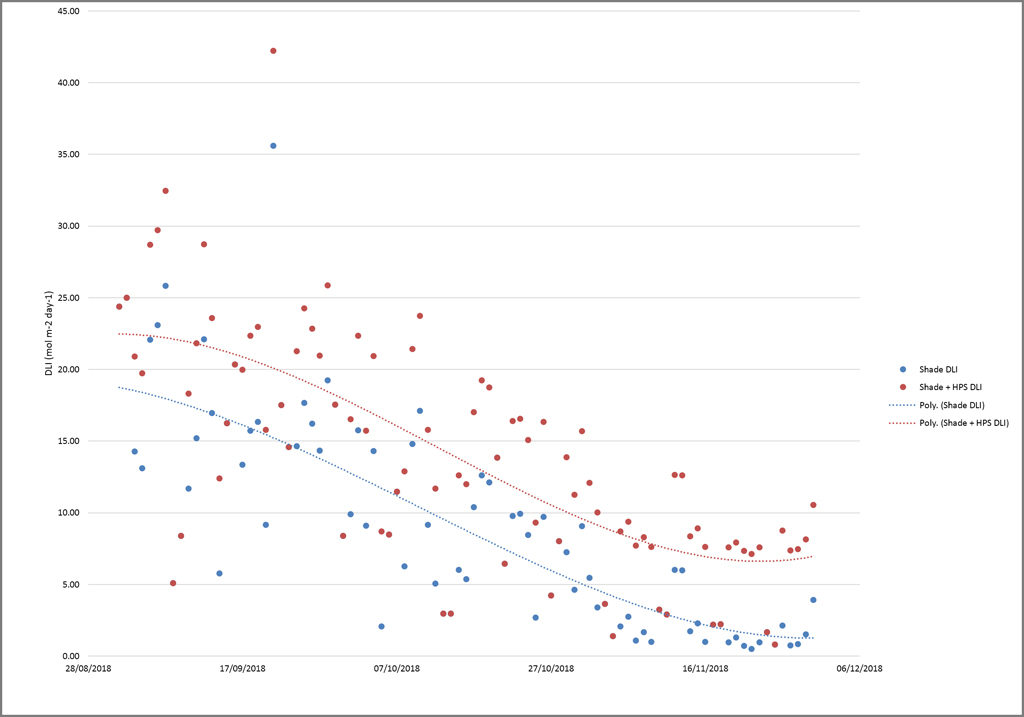
Where additional light was provided, in conjunction with Primo Maxx II, the DLI levels remained higher, and the corresponding turf health and quality significantly better.

